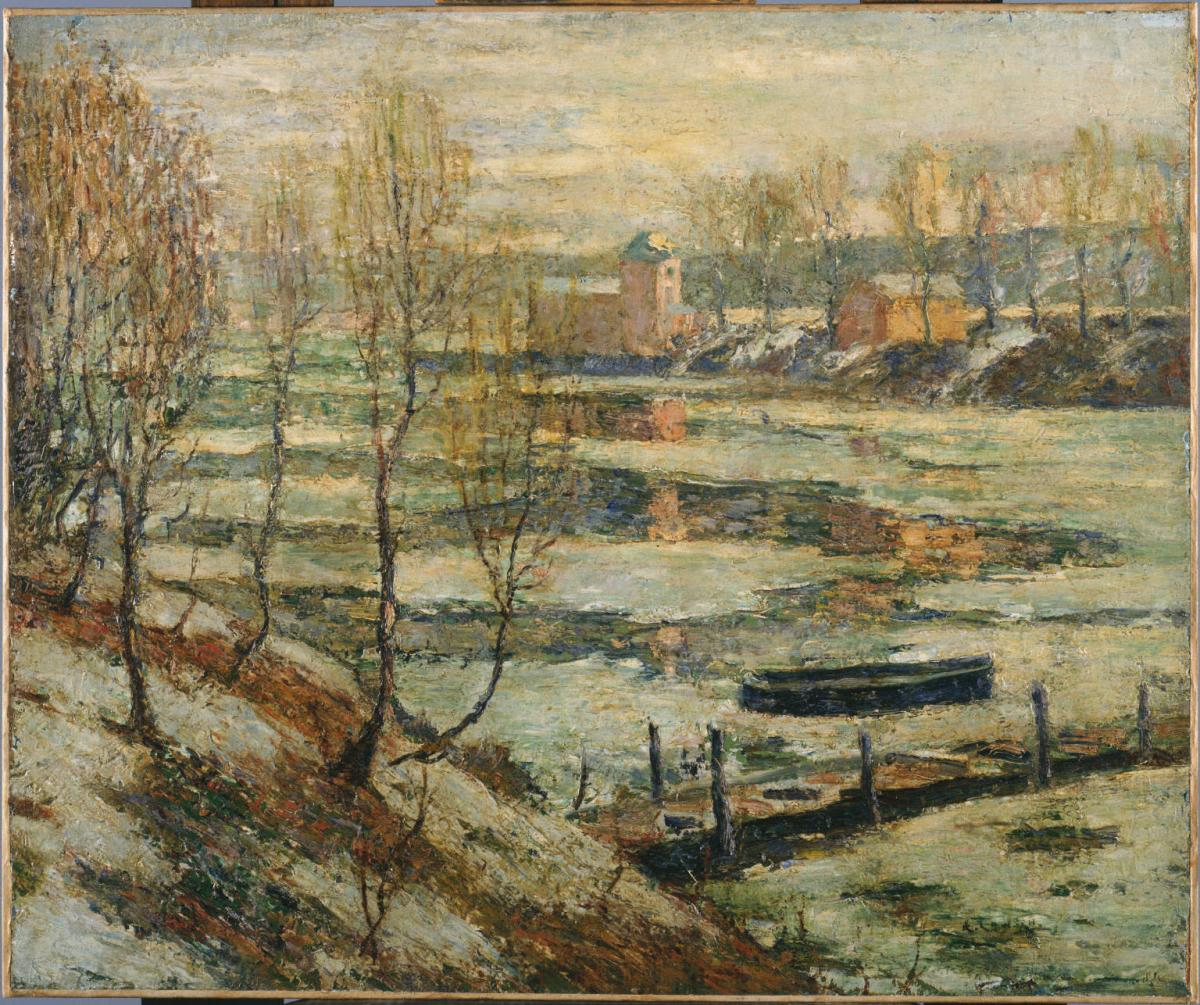Ice in the River
Ernest Lawson ( c. 1907 )

Ice in the River, a winter scene of upper Manhattan, documents the once rural setting along the Hudson and Harlem Rivers and hints at the gradual encroachment of urban life on the open country as New York expanded north. Lawson shared colleague and teacher John Henry Twachtman’s interest in winter scenes, especially the effects of light on fallen snow. Subtle hints of blue are used throughout, not to define sunlight and shadow as did the Impressionists, but to create form and a vibrant surface across the river.
Ice in the River was painted in 1907 and is closely related to several other snow scenes composed around the same time, although it depicts a different site along the river. Like these similar paintings, it has a high horizon and expansive view that allows the landscape to spread before the viewer like a tapestry. It is painted with interwoven brushstrokes that create the illusion of a bright haze. Lawson painted the boat and pier in dark blue, creating the composition’s focal point, which contrasts with the wintry gray-green and cream-colored pastel shades that dominate the background.
Phillips, who had an affinity for color, was drawn to this work. Lawson created graceful color harmonies that make the painting glow with warm sunlight. Phillips understood this when he wrote about Lawson’s “peculiar power of finding sensuous beauty in dreary places.”